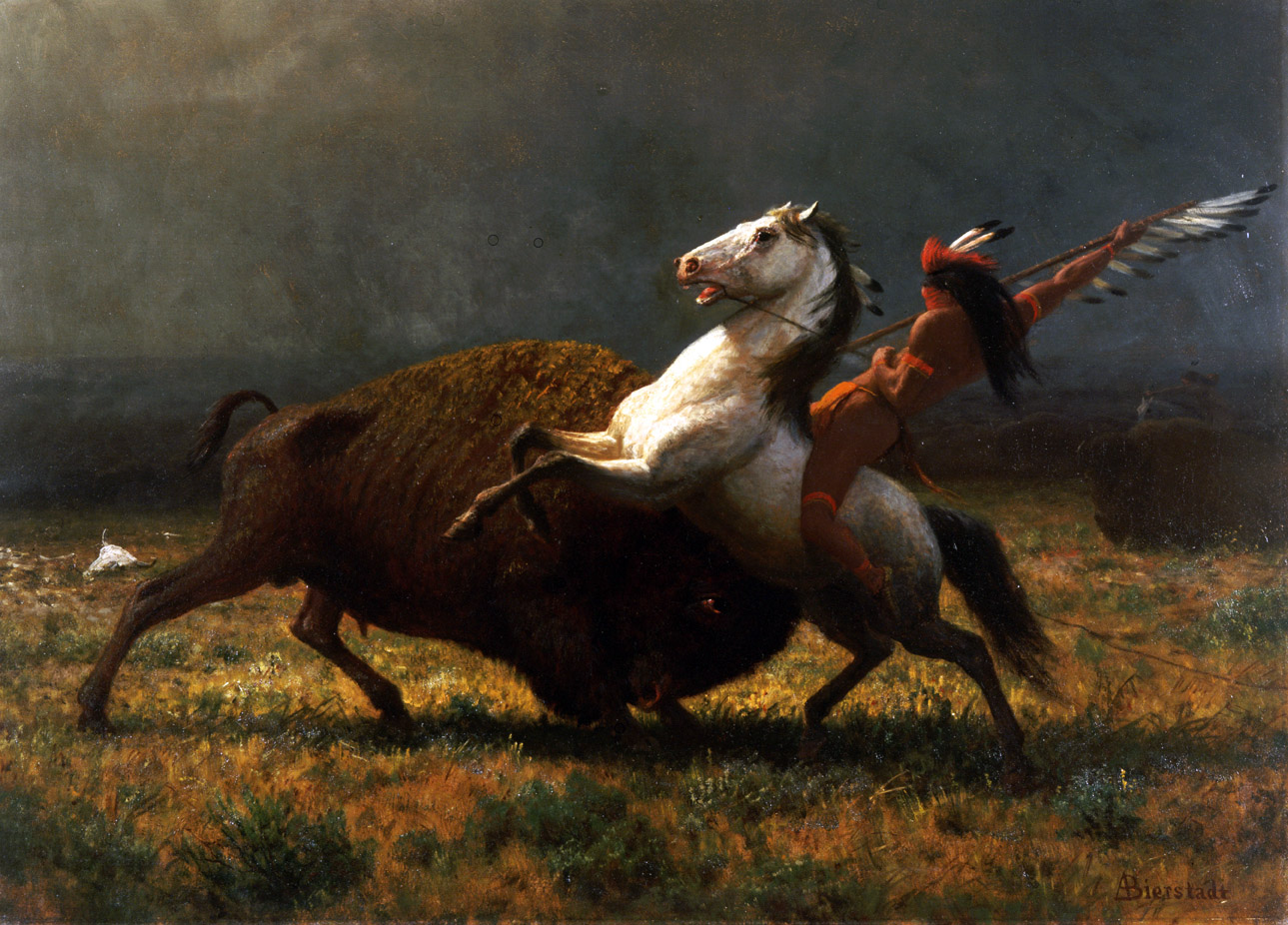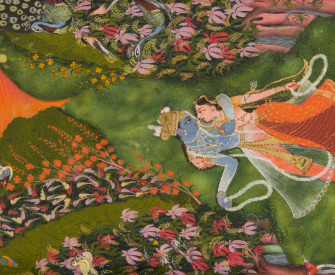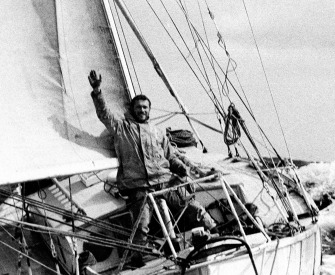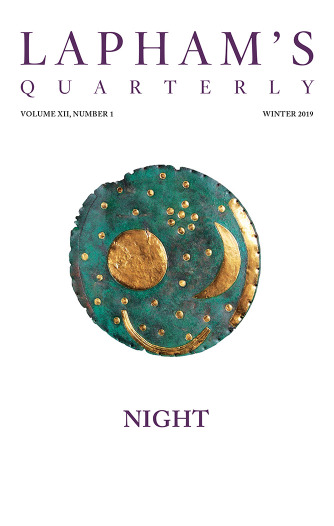Man is a noble animal, splendid in ashes and pompous in the grave.
—Thomas Browne, 1658Theme and Variation
Charles Darwin on the law of the species.
How strange it is that a bird, under the form of woodpecker, should have been created to prey on insects on the ground; that upland geese, which never or rarely swim, should have been created with webbed feet; that a thrush should have been created to dive and feed on subaquatic insects; and that a petrel should have been created with habits and structure fitting it for the life of an auk or grebe! And so on in endless other cases. But on the view of each species constantly trying to increase in number, with natural selection always ready to adapt the slowly varying descendants of each to any unoccupied or ill-occupied place in nature, these facts cease to be strange, or perhaps might even have been anticipated.
As natural selection acts by competition, it adapts the inhabitants of each country only in relation to the degree of perfection of their associates—so that we need feel no surprise at the inhabitants of any one country, although on the ordinary view supposed to have been specially created and adapted for that country, being beaten and supplanted by the naturalized productions from another land. Nor ought we to marvel if all the contrivances in nature be not, as far as we can judge, absolutely perfect, and if some of them be abhorrent to our ideas of fitness. We need not marvel at the sting of the bee causing the bee’s own death; at drones being produced in such vast numbers for one single act, with the great majority slaughtered by their sterile sisters; at the astonishing waste of pollen by our fir trees; at the instinctive hatred of the queen bee for her own fertile daughters; at ichneumonidae feeding within the live bodies of caterpillars; and at other such cases. The wonder indeed is, on the theory of natural selection, that more cases of the want of absolute perfection have not been observed.
The complex and little-known laws governing variation are the same, as far as we can see, with the laws which have governed the production of so-called specific forms. In both cases physical conditions seem to have produced but little direct effect, yet when varieties enter any zone, they occasionally assume some of the characters of the species proper to that zone. In both varieties and species, use and disuse seem to have produced some effect, for it is difficult to resist this conclusion when we look, for instance, at the loggerhead duck, which has wings incapable of flight, in nearly the same condition as in the domestic duck; or when we look at the burrowing tuco-tuco, which is occasionally blind, and then at certain moles, which are habitually blind and have their eyes covered with skin; or when we look at the blind animals inhabiting the dark caves of America and Europe. In both varieties and species, correlation of growth seems to have played a most important part, so that when one part has been modified, other parts are necessarily modified. In both varieties and species reversions to long-lost characters occur. How inexplicable on the theory of creation is the occasional appearance of stripes on the shoulder and legs of the several species of the horse genus and in their hybrids! How simply is this fact explained if we believe that these species have descended from a striped progenitor, in the same manner as the several domestic breeds of pigeon have descended from the blue-and-barred rock pigeon!
On the ordinary view of each species having been independently created, why should the specific characters, or those by which the species of the same genus differ from one another, be more variable than the generic characters in which they all agree? Why, for instance, should the color of a flower be more likely to vary in any one species of a genus, if the other species, supposed to have been created independently, have differently colored flowers, than if all the species of the genus have the same colored flowers? If species are only well-marked varieties, of which the characters have become in a high degree permanent, we can understand this fact, for they have already varied since they branched off from a common progenitor in certain characters, by which they have come to be specifically distinct from one another; and therefore these same characters would be more likely still to be variable than the generic characters which have been inherited without change for an enormous period. It is inexplicable on the theory of creation why a part developed in a very unusual manner in any one species of a genus, and therefore, as we may naturally infer, of great importance to the species, should be eminently liable to variation; but, on my view, this part has undergone, since the several species branched off from a common progenitor, an unusual amount of variability and modification, and therefore we might expect this part generally to be still variable. But a part may be developed in the most unusual manner, like the wing of a bat, and yet not be more variable than any other structure if the part be common to many subordinate forms, that is, if it has been inherited for a very long period; for in this case it will have been rendered constant by long-continued natural selection.
Glancing at instincts, marvelous as some are, they offer no greater difficulty than does corporeal structure on the theory of the natural selection of successive, slight, but profitable modifications. We can thus understand why nature moves by graduated steps in endowing different animals of the same class with their several instincts. I have attempted to show how much light the principle of gradation throws on the admirable architectural powers of the hive bee. Habit no doubt sometimes comes into play in modifying instincts, but it certainly is not indispensable, as we see, in the case of neuter insects, which leave no progeny to inherit the effects of long-continued habit. On the view of all the species of the same genus having descended from a common parent, and having inherited much in common, we can understand how it is that allied species, when placed under considerably different conditions of life, should follow nearly the same instincts—why the thrush of South America, for instance, lines her nest with mud, like our British species. On the view of instincts having been slowly acquired through natural selection we need not marvel at some instincts being apparently not perfect and liable to mistakes, and at many instincts causing other animals to suffer.

The Last of the Buffalo, by Albert Bierstadt, 1888. Photo: Christie’s Images © The Bridgeman Art Library.
If species be only well-marked and permanent varieties, we can at once see why their crossed offspring should follow the same complex laws in their degrees and kinds of resemblance to their parents—in being absorbed into each other by successive crosses and in other such points—as do the crossed offspring of acknowledged varieties. On the other hand, these would be strange facts if species have been independently created and varieties have been produced by secondary laws.

Charles Darwin
From On the Origin of Species. At the age of twenty-two in 1831, Darwin set sail on the HMS Beagle on a voyage that lasted five years, during which time he found in the Brazilian rain forest “a chaos of delight,” watched the eruption of Mount Osorno, encountered iguanas and tortoises on the “frying hot” Galapagos Islands. Back in London around 1837, he wrote in his notebooks, “animals our fellow brethren in pain, disease, death & suffering…they may partake, from our origin in one common ancestor; we may all be netted together.”




